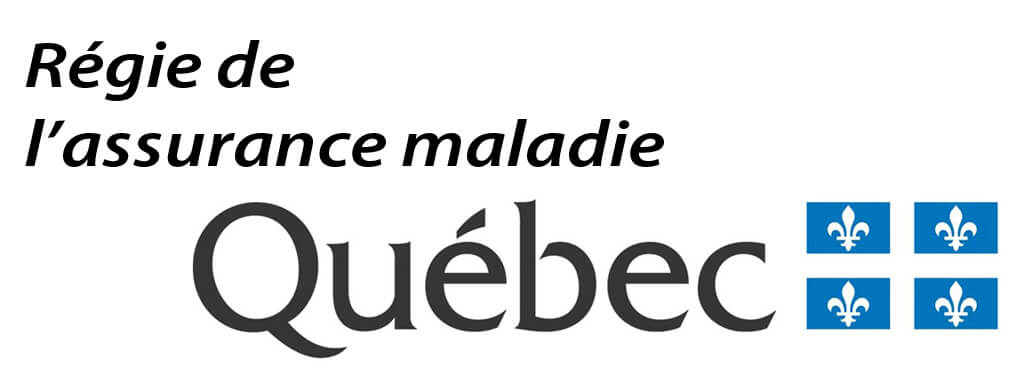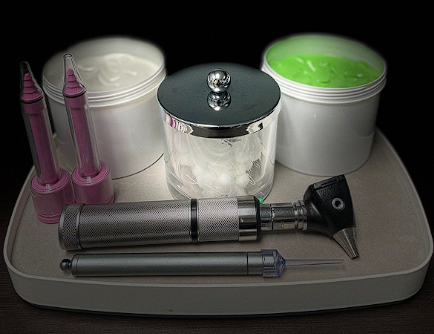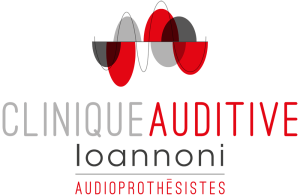To learn more


Hearing aids may be covered by one of the different programs depending on certain eligibility criteria.
Find out more.
 Régie de l’assurance maladie du Québec (RAMQ)
Régie de l’assurance maladie du Québec (RAMQ)
 Commission des normes, de l’équité, de la santé et de la sécurité du travail (CNESST)
Commission des normes, de l’équité, de la santé et de la sécurité du travail (CNESST)
 Veterans Affairs Canada (VAC)
Veterans Affairs Canada (VAC)
 Green Shield Canada (GSC)
Green Shield Canada (GSC)
 Workplace Safety and Insurance Board (WSIB Ontario)
Workplace Safety and Insurance Board (WSIB Ontario)
 Non-Insured Health Benefits for First Nations and Inuit (NIHB)
Non-Insured Health Benefits for First Nations and Inuit (NIHB)

Private insurance
Did you know that the CNESST can compensate you for the following
- Purchase and fitting costs of hearing aids
- Repair, remodeling or replacement costs
The CNESST must first recognize that your deafness is caused by prolonged exposure to noise in the course of your employment. Self-employed workers must have contributed to the CNESST to be eligible.
Steps to follow to open a file with the CNESST
- Hearing Health Consultation
- Meeting with the audiologist for a hearing evaluation.
- Meeting with ENT doctor to diagnose deafness caused by noise exposure
- Complete the CNESST form.
- Transmission of documents.
- Waiting for eligibility decision.
- Reception of the decision
- Make an appointment with the ENT doctor to complete the file
- Make an appointment with a hearing care professional.
You may be entitled to compensation. This varies according to certain criteria determined by the CNESST.
Are you no longer in the employment market?
If you are no longer working or have retired, you can still apply to the CNESST.
Prevention
It is important to remember that wearing hearing protection is essential to maintain good hearing health. They reduce ambient noise, your hearing fatigue and the risk of tinnitus.
Do not hesitate to contact us if you need more information.
1st appointment:
Complete needs analysis
- Explanation of audiological results
- Recommendation and choice of your hearing aids
- Ear impressions
- Follow-up and referral to various hearing health care professionals as needed.
2nd appointment:
Delivery of your hearing aids
- Adjustment of your hearing aids according to your amplification needs
- Explanation and demonstration of the use and maintenance of your hearing aids
- Establishing your hearing rehabilitation plan
- Answer to your questions
3rd appointment:
Explanation of results
- Review of the concepts learned
- Explanation of the follow-up service offered
- Answer to your questions
For your benefit, regular maintenance of your hearing aids can increase their lifespan and effectiveness over time.
The many advantages of a custom-made prosthesis or earmold :
- Increased comfort
- Better control of the direction of sound towards the eardrum
- Superior power
- Easy insertion
1. Anatomical verification and otoscopy
Using an otoscope, lhe audioprosthesist examines the anatomy of your ears (pinna, ear canal and eardrum) and ensures that there are no contraindications to impression taking.
2. Selection and insertion
The choice of eardrum protector differs from person to person, and is adapted to the diameter of the ear canal.
The hearing care professional places the eardrum protector perpendicular to the eardrum, ensuring that it covers the entire surface of the ear canal.
3. impression of the ears
To prepare the impression paste, the audioprosthesist mixes two types of paste for a few secondss and thenthen the preparation into the injection syringe.
The paste is inserted with light pressure to ensure that the impression is not damaged.‘impression is thea most and detailed as possible. The paste will cover your entire ear. It is recommended not to move or talk while the paste is being inserted.
4. Drying time
Wait 5-10 minutes for the paste to harden in the ear.
5. Removing your ear prints
When the paste is dry, the audioprosthetist removes it all. It is sometimes necessary for the patient to open his mouth several times in order to facilitateer removal.
Lhe audioprosthesist will make a visual inspection of the print quality to ensure compliance according to the model prosthesiss auditorys and/or hearing protectors desireds.

printing tools
1. Anatomical verification and otoscopy
- Using an otoscope, lhe audioprosthesist examines the anatomy of your ears (pinna, ear canal and eardrum) and ensures that there are no contraindications to impression taking.
2. Selection and insertion
- The choice of eardrum protector differs from person to person, and is adapted to the diameter of the ear canal.
- The hearing care professional places the eardrum protector perpendicular to the eardrum, ensuring that it covers the entire surface of the ear canal.
3. impression of the ears
- To prepare the impression paste, the audioprosthesist mixes two types of paste for a few secondss and thenthen the preparation into the injection syringe.
- The paste is inserted with light pressure to ensure that the impression is not damaged.‘impression is thea most and detailed as possible. The paste will cover your entire ear. It is recommended not to move or talk while the paste is being inserted.
4. Drying time
- Wait 5-10 minutes for the paste to harden in the ear.
5. Removing your ear prints
- When the paste is dry, the audioprosthetist removes it all. It is sometimes necessary for the patient to open his mouth several times in order to facilitateer removal.
- Lhe audioprosthesist will make a visual inspection of the print quality to ensure compliance according to the model prosthesiss auditorys and/or hearing protectors desireds.

printing tools
1. Anatomical verification and otoscopy
- Using an otoscope, lhe audioprosthesist examines the anatomy of your ears (pinna, ear canal and eardrum) and ensures that there are no contraindications to impression taking.
2. Selection and insertion
- The choice of eardrum protector differs from person to person, and is adapted to the diameter of the ear canal.
- The hearing care professional places the eardrum protector perpendicular to the eardrum, ensuring that it covers the entire surface of the ear canal.
3. impression of the ears
- To prepare the impression paste, the audioprosthesist mixes two types of paste for a few secondss and thenthen the preparation into the injection syringe.
- The paste is inserted with light pressure to ensure that the impression is not damaged.‘impression is thea most and detailed as possible. The paste will cover your entire ear. It is recommended not to move or talk while the paste is being inserted.
4. Drying time
- Wait 5-10 minutes for the paste to harden in the ear.
5. Removing your ear prints
- When the paste is dry, the audioprosthetist removes it all. It is sometimes necessary for the patient to open his mouth several times in order to facilitateto removal.
- Lhe audioprosthesist will perform a visual inspection of the print quality to ensure compliance according to the model prosthesiss auditorys and/or hearing protectors desireds.
They are sounds perceived in the absence of any identifiable external sound source. These noises can appear as whistling, buzzing, wind noise or pulsing. The causes are very diverse; sound trauma, reaction to a medication, stress, fatigue. Their presence can be a symptom of hearing loss.
Need help?
- 10 to 15% of the population is affected by tinnitus.
- 41% of Canadians have experienced this.
The fact that tinnitus is invisible can increase anxiety about these noises. It is important to understand that you are not alone and that there is support.
Institution de réadaptation Gingras Lindsay de Montréal
Department Institut Raymond Dewar
6363 Chemin HudsonMontreal (QC)
H3S 1M9
Tel. : 514 527-4525
Fax. : 514 510-2204
Talk to your hearing care professional!
Listening to loud music can have irreversible consequences to your hearing (early hearing loss, deafness, tinnitus, hyperacusis).
Some tips
If you listen to music for more than an hour a day, it is better to reduce the volume.
In nightclubs or at a concert:
- Stay away from the speakers.
- Use protective earplugs. Custom earplugs provide a better attenuation and and a better confort. If you are unsure about whitch type is suitable to your needs, contact us, we will be happy to help you. Custom-made protectors provide better attenuation and comfort. If you’d like more information on the type of protector that’s right for you, please don’t hesitate to contact us.
- Take hourly breaks in a quiet area or outside.
- After exposure to these loud noises, get a good night’s sleep to recover.
If you notice whistling or buzzing sounds that do not reduce after a few days, it is best to consult a doctor.
In some concerts, the music can reach up to 140 dB near the speakers. For comparison, 140dB (A) is the perceived intensity of a jet taking off.
Two ears are better than one!
If you have hearing loss in both ears, it is best to wear two hearing aids because your brain naturally processes sound with both ears. The human auditory system is designed to create binaural connections in your brain. A monaural fitting, that is, with only one hearing aid, limits your brain’s ability to receive the message.
Locating the origin of a sound
The brain requires two ears that work in the same way to know where sounds come from. These sound reach the nearer ear faster than the farther ear. By making a comparison and applying this small difference, your brain is able to detect where the sound is coming from and its distance. This information is very important and allows you to hear the horn of a car in the distance.
Improve your understanding in noisy settings
For people with hearing problems, it is even more difficult to follow a conversation in a noisy setting. Your brain needs signals from both ears to separate and identify sounds effectively. This is how your brain naturally helps you focus on what you want to hear, using both ears.
Cognitive health
A significant number of studies conducted in recent years have reinforced the association between hearing loss and cognitive disorders such as depression and dementia.
Untreated hearing loss increases the risk of significant cognitive impact
- The effort required of hearing-impaired people to hear and understand speech creates a constant tension that affects normal cognitive function.
- Hearing-impaired people tend to isolate themselves and reduce their social interaction, leading to mental stagnation.
- The combination of these factors accelerates grey matter atrophy. In fact, people with impaired hearing lose more grey matter per year than those with normal hearing 1 2. . 1, 2. The same damage has been observed in Alzheimer’s patients, and plays a key role in memory and sensory integration.
The use of hearing aids contributes to healthy aging by :
- Lightening the cognitive load
- Promotes memory stimulation
- Reducing listening effort
The result will be an increase in the energy available to understand and hear the world around you as well as having a positive impact on cognitive stimulation, anxiety, depression and, above all, your quality of life. 3.
Physical health
Hearing loss and cardiovascular disorders
Studies have shown that a healthy cardiovascular system has a positive impact on hearing.
In fact, a study published in the
American Journal of Medicine
indicates that high-level physical activity is associated with a lower risk of hearing loss in the elderly.
4
.
The link between heart and hearing
When we suffer from cardiovascular problems, blood flow is reduced, resulting in damage to the blood vessels in the inner ear. As these cells are particularly sensitive to blood flow, they will be more affected in cells dealing with low-frequency sounds. Low-frequency hearing loss can be an early sign of cardiovascular disease.
By the same token, low-frequency hearing loss can be considered a marker indicating the presence or potential development of cardiovascular disease.
6
.
Hearing loss and diabetes
Studies have shown that people with type 2 diabetes (diabetes mellitus) are at greater risk of hearing loss.
Autopsies performed on diabetic subjects have demonstrated that the pathological changes associated with the condition can lead to sensorineural hearing loss by damaging the nerves and blood vessels of the inner ear.
According to the American Diabetes Association, diabetics are on average 2 times more likely than non-diabetics to develop hearing loss.
We encourage you to take charge of your hearing by starting with the HEARING SCREENING questionnaire, or by contacting us for an in-clinic hearing screening so you can discuss it at your next follow-up with your doctor.
Emotional well-being
Hearing well enables us to be socially active, to connect with others and to communicate effectively.
Hearing loss leads to negative socio-emotional consequences such as :
- Social isolation
- Increased feelings of loneliness
- A feeling of embarrassment, fear and fatigue
What’s more, these negative effects extend beyond the person with hearing loss, affecting family members and other communication partners as they have to adapt their interactions.
7
.
Hearing aids reduce these effects and increase the satisfaction you and your loved ones derive from your relationships. 8 and increase your sense of security.
Wearing hearing aids means staying in touch with the world around you.
Sources :
- Lin, F.R. et al. (2013). Hearing loss and cognitive decline in older adults. JAMA Intern Med. 173(4), 293-299.
- Johns Hopkins Medicine. (January 2014). Hearing Loss linked to Accelerated Brain Tissue Loss. https://www.hopkinsmedicine.org/News/media/releases/hearing_loss_linked_to_accelerated_brain_tissue_loss_
- Littmann,V., et al. (2016). Clinical studies shoe advanced hearing aid technology reduces listening effort.
Hearing Review
, 23(4), 36. - Hall, R.H. &Kerschen, S.R (2010). The Influence of Cardiovascular Health on Peripheral and Central Auditory Function in Adults: A Research Review. American Journal of Audiology. 19,9-16.
- Curhan, Sharon G et al. Body Mass Index, Waist Circumference, Physical Activity and Risk of hearing loss in women.
The American Journal of Medicine
volume 126, Issue 12, 1142.e1-1142.e8. - Friedland, D. R., Cederberg, C., Tarima, S., (2009). Audiometric pattern as a predicator of cardiovascular status: Development of a model for assesment of risk. The Laryngoscope, 119(3), 473-86.
- D.S Dalton, K.J Cruickshanks. B.E.K Klean, et al (2003), The Impact of Hearing Loss on Quality of Life in Older Adults. The Gerontologists journal. 43(5) 661-668.
- Kamil R.J, Lin F.R. (2015). The Effects of Hearing Impairment in Older Adults on Communication Partners. A systematic Review. Journal of The American Academy of Audiology. 26(2), 155-182.

